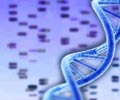DNA Fingerprinting - A Boon to Solving Criminal Cases
In 1983, on a narrow footpath that passed by a psychiatric hospital in the central English village of Narborough, 15-year old Lynda Mann was raped and strangled. Investigating detectives found new substantive clues. Conventional forensic tests on recovered semen, for example, could only narrow the identity of the killer to about 10% of the population. Despite a year wide-ranging police work, the case was eventually dropped when hundreds of leads all proved futile.
Three years later, 15 year old Dawn Ashworth was similarly sexually attacked and slain within a few hundred yards of the first crime and semen was again recovered from a vaginal swab. Richard Buckland, a 17 year old kitchen worker who had known the victim was arrested and after extensive interrogation, confessed to the rape and murder.
The Lynda Mann was reopened and the samples were sent to a Professor Alec Jeffreys at a nearby university. He had developed the novel technique of DNA fingerprinting and using it, he concluded that both girls had been raped by the same man, but the man was not Buckland. Infact, Buckland mentally a bit dull and easily confused had not even fit into the 10 % class of possible suspects.
Men and teenage boys in Narborough and nearby villages were asked voluntarily submit to blood drawing and any blood that met the right criteria was sent to the Professor for analysis. The police hoped that this massive undertaking would somehow flush out the killer. After thousands of samples nothing turned up.
Colin Pitchfolk, a 28 year old bakery worker who was well known for creative cake decoration had not given blood when his notice was sent. He had used a falsified identification document regarding his community. This was reported to the police by his coworkers. Pitchfork's blood was the last of 4583 to be drawn and tested. His DNA proved a perfect match to the genetic fingerprint obtained from the semen samples.
The technology today has proved to be so powerful that even the blood-stained clothing of Abraham Lincoln was used and the DNA analyzed for evidence of a genetic disorder called Marfan's Syndrome.








